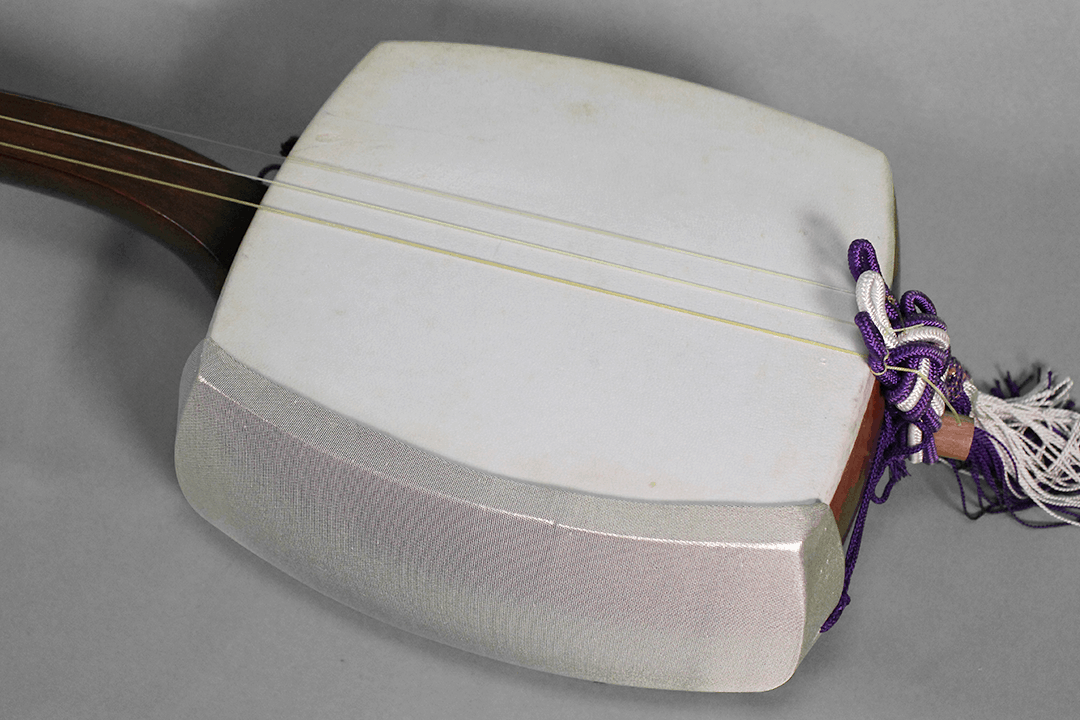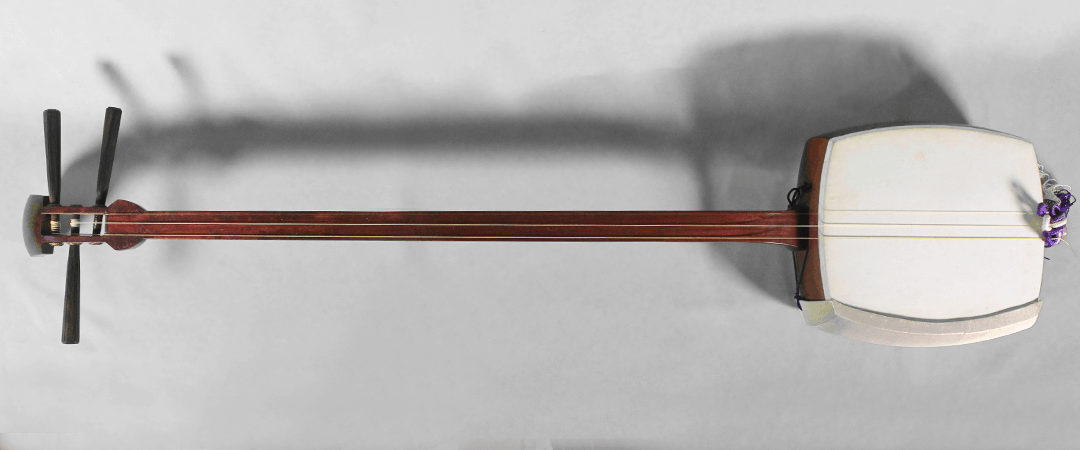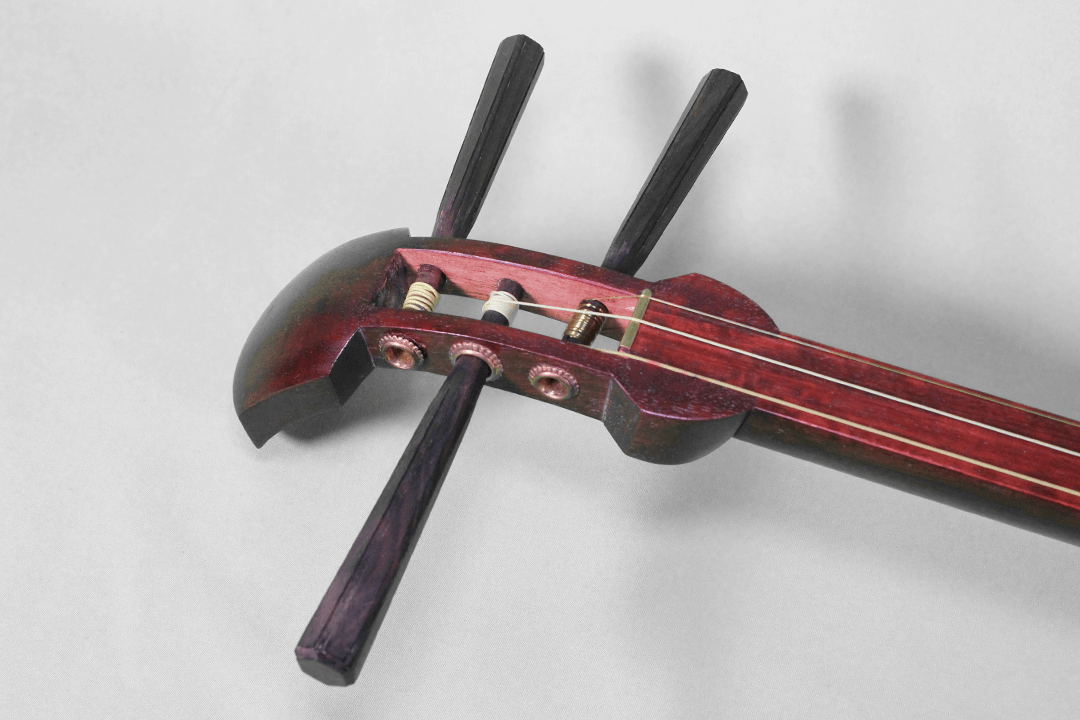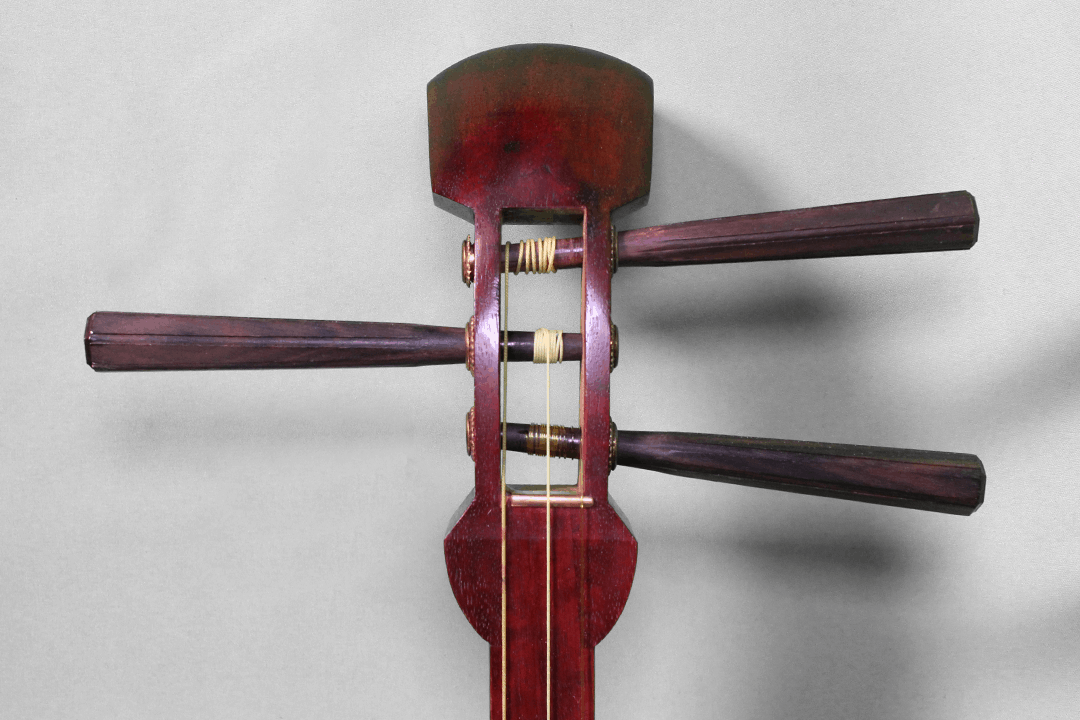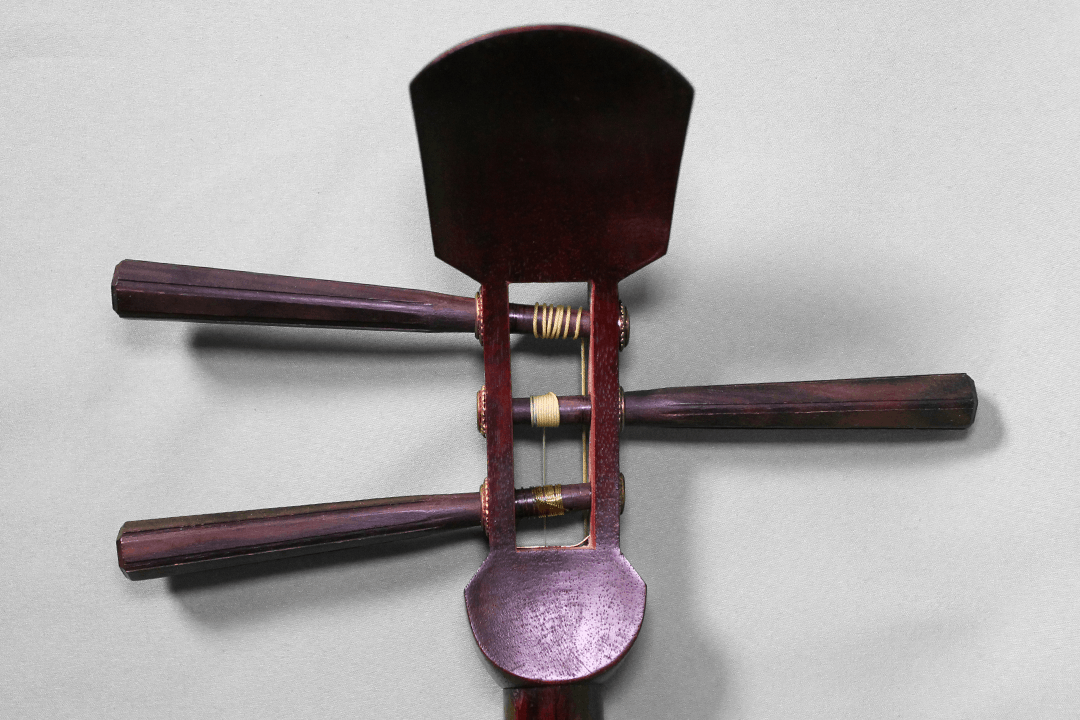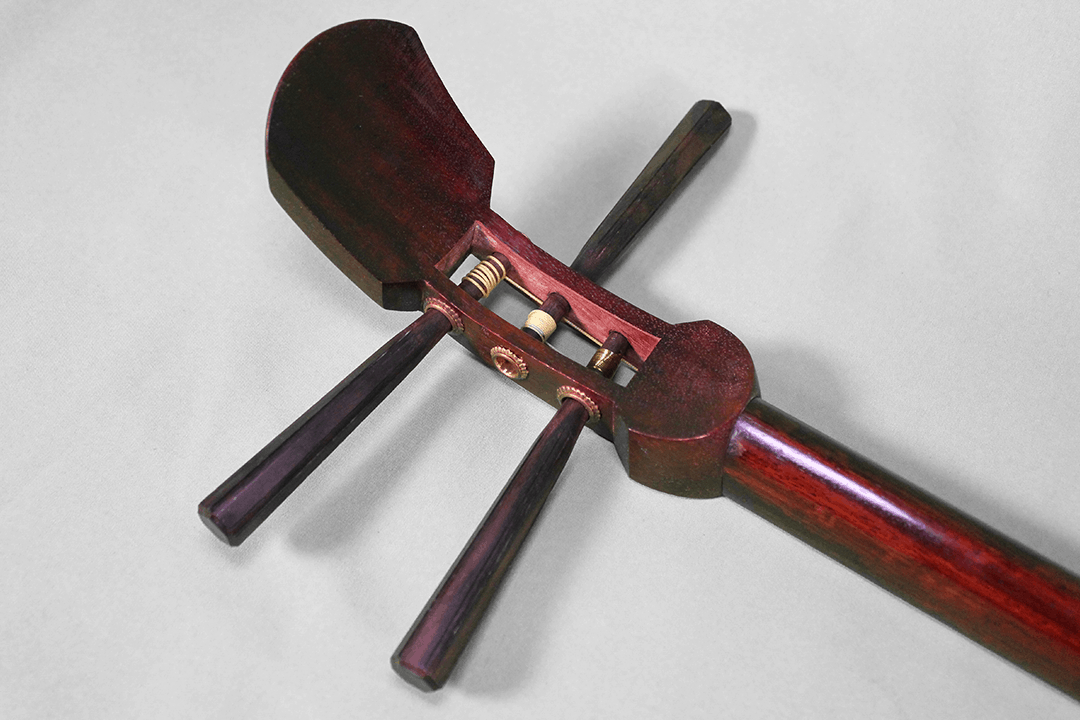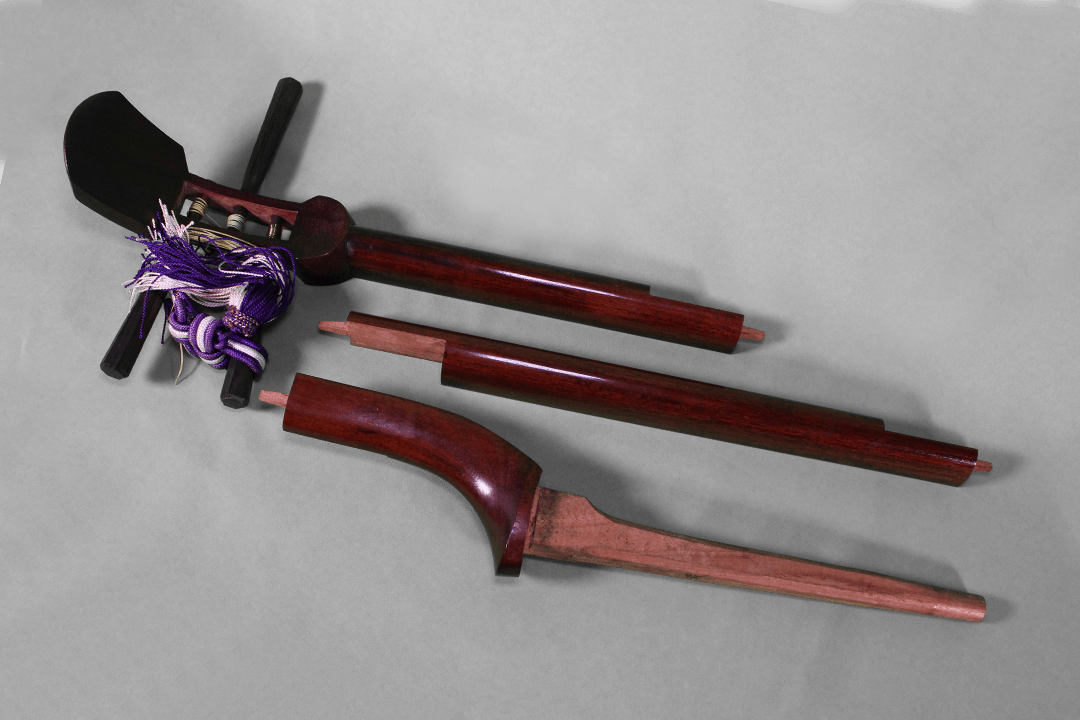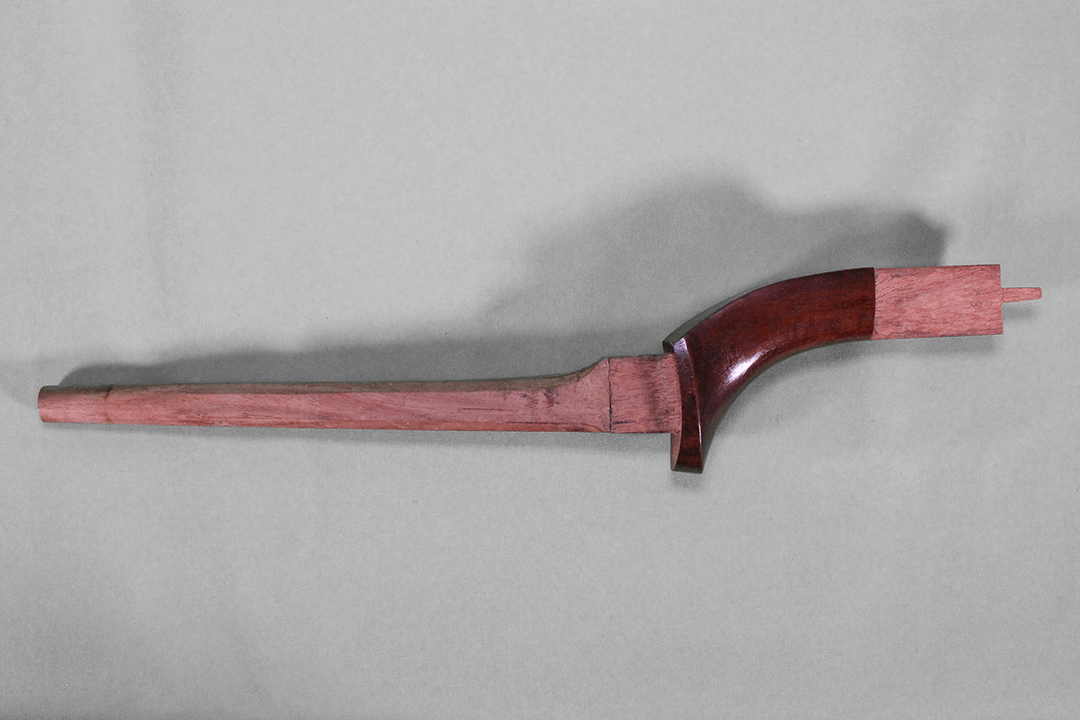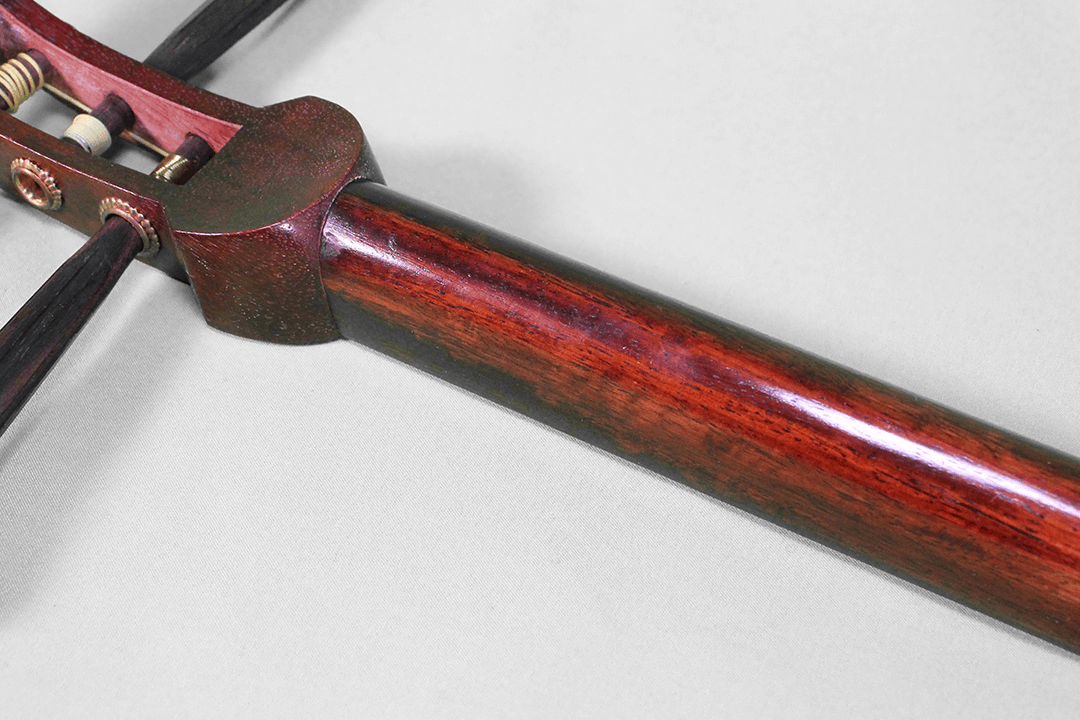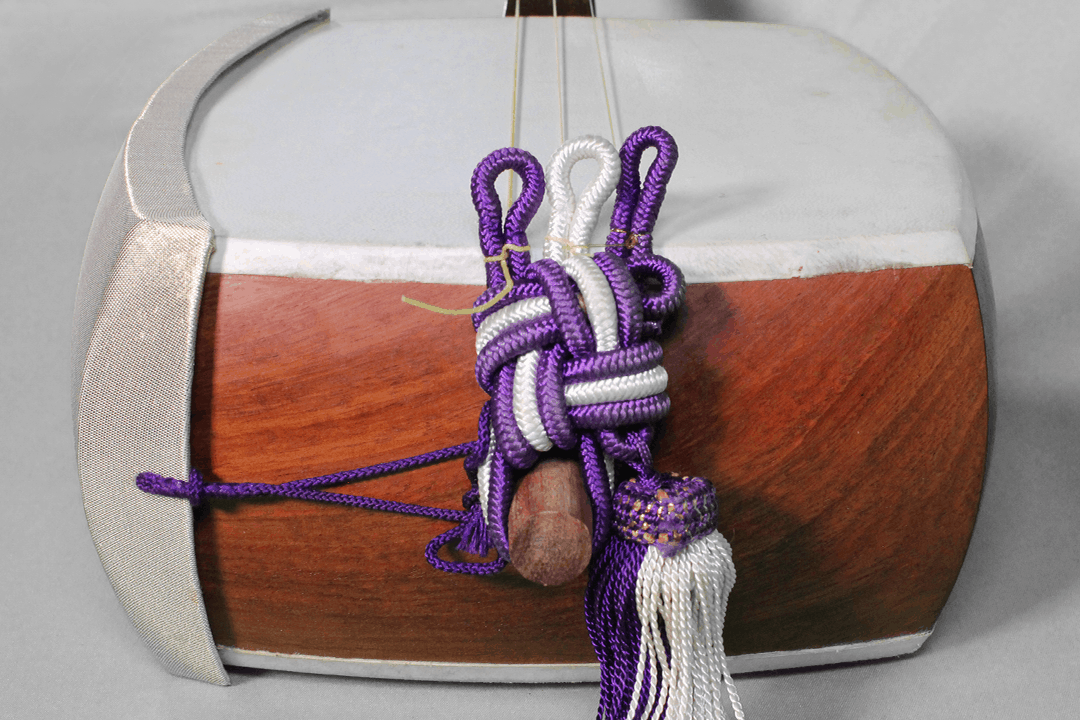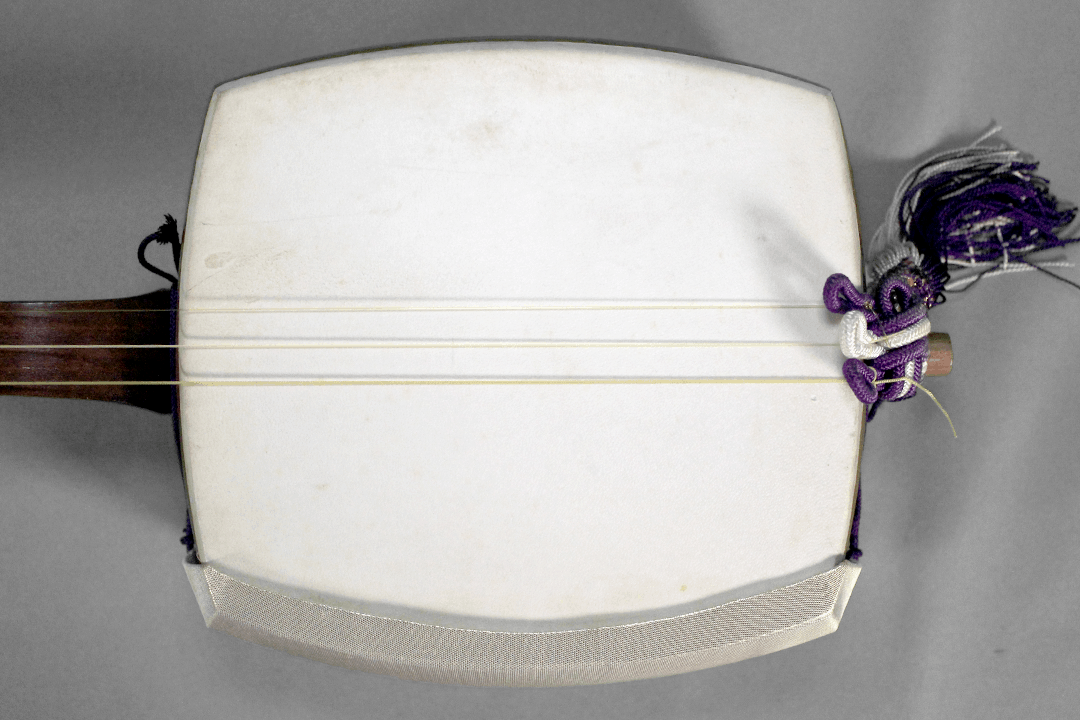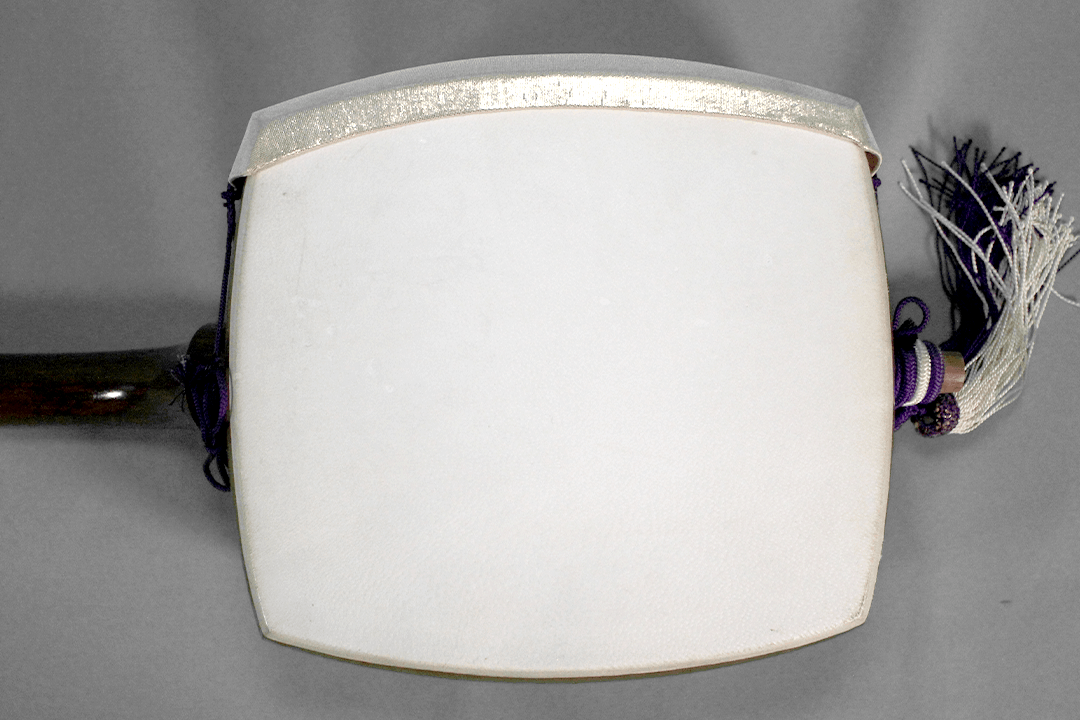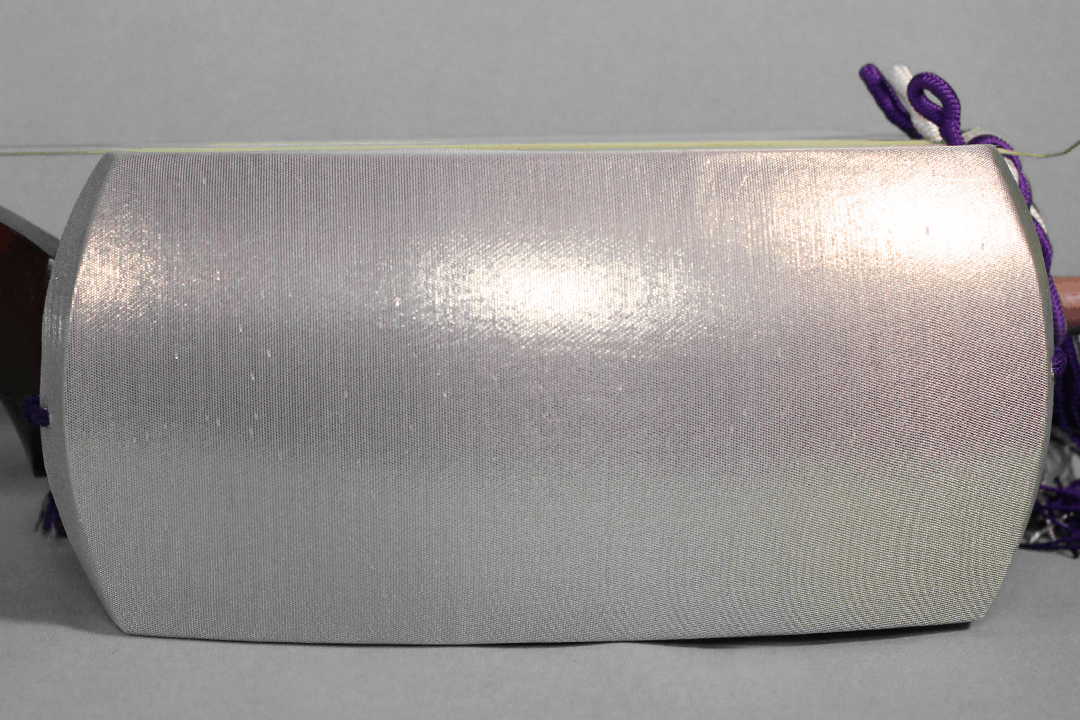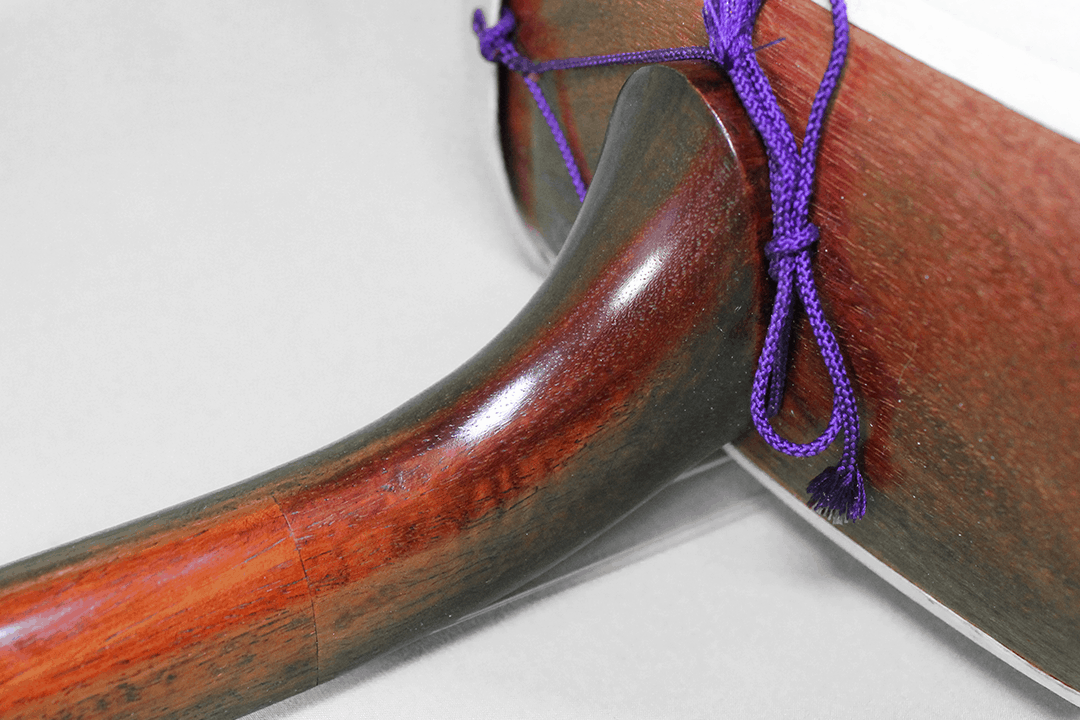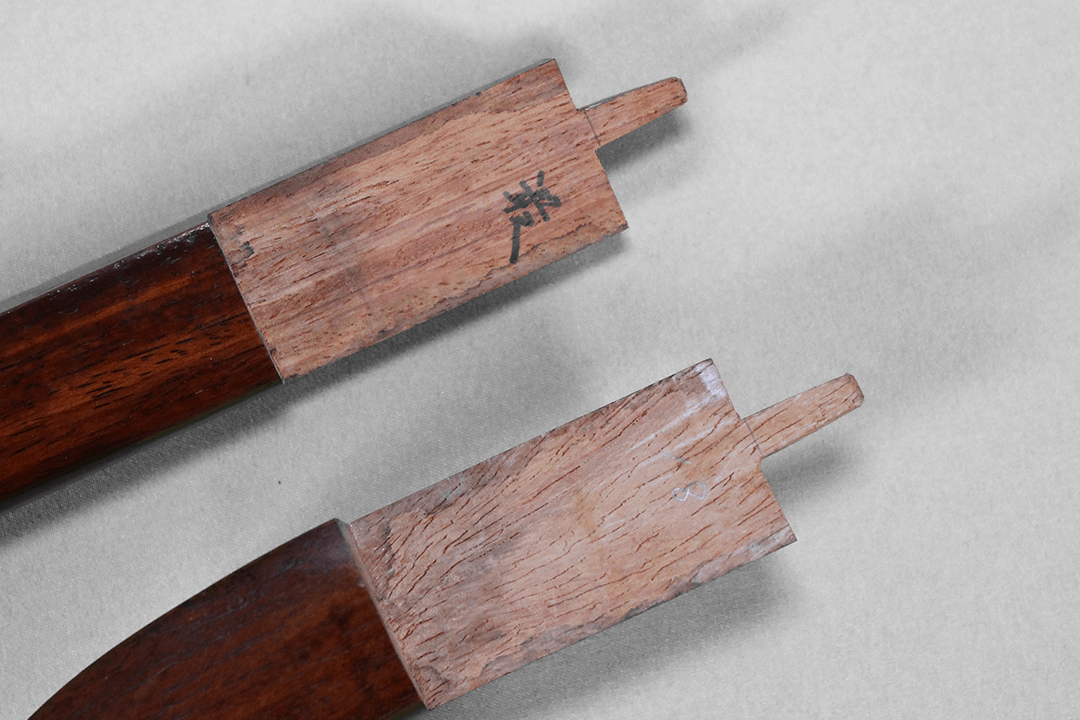Hosozao Shamisen Set “Hanae”
- hosozao shamisen (sao width: 25,5mm, height: 26,5 mm)
- made from shitan wood
- natural back and front skins
also included in the set:
- neo
- doukake
- tenjin cap
- strings
445,00 €
Details
The style of this shamisen is (hosozao), typically used for Nagauta, Kouta and Hauta playing style. The skins have a good tension and the instrument sounds very nice. You can tell it has been played but well cared for.
The instrument is made from shitan wood – a high-class hardwood traditionally used for shamisen. The instrument comes with a cute white and purple neo with an attached tassle. The golden doukake is subtle yet elegant. Also included in the package is a set of attached strings and a tenjin cap. The dou is skinned with natural skins that will wrap you in the authentic and warm sound of shamisen music.
If you don’t have one lying around to use, please consider getting a washi bag to protect your shamisen’s skin from humidity.
This neck is 25,5 mm wide and 26,5 mm high/thick at the top and widens slightly towards the dou. It has an elegantly slanted hatomune – the part where the neck enters the sound box – which is typical for hosozao shamisen associated with Nagauta style.
The tsukigata (the curved end of the tenjin) is in perfect condition. The instrument’s wood has a beautiful deep brown shade. The neck is crafted in mitsuori style: It can be separated into three parts. This makes travelling with the shamisen very easy – even if you have to get by with light and small luggage.
The itomaki (tuning pegs) are made from ebony wood and are carved in a traditional way that makes them easy to grip despite their slender built.
All you need to add to your set to start playing are a koma, a bachi and a yubisuri. Depending on the style you intend to play and your personal preferences, you want to pick a certain kind of koma and bachi. Yubisuri come in different sizes, and I didn’t want to deprive you of the difficult yet fun choice between all the wonderful colors. I also recommend getting an adhesive dougomu or a hizagomu that will prevent the instrument from slipping off your thigh. Depending on your personal needs, you might want to consider getting a fujaku strip to mark the positions along the neck. Alternatively, you can mark positions individually or play without any markings.
If you need help with picking the right additions to this set, don’t hesitate to send a message and we will find the perfect match for you together.
